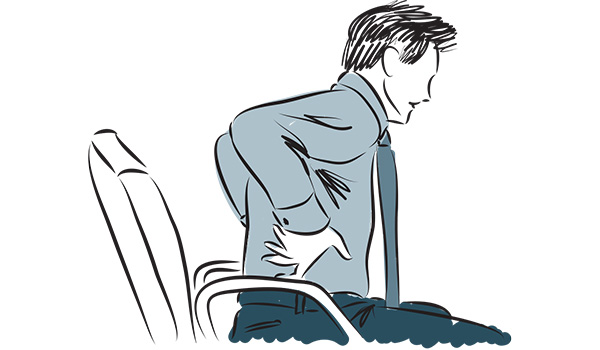
Business leaders in all industries are coming to appreciate something that employees have long recognized: that their environment matters. It’s increasingly apparent that the health and well-being of staff has a substantial impact on the bottom line and that investments in the short-run can pay dividends in the long-run.
In 2014, on-the-job injury and illness resulted in 1.15 million people missing work. Among those individuals, the average number of days missed per person was nine. That’s nearly two weeks of missed productivity. What’s more, a large portion of these problems stemmed from preventable musculoskeletal issues, including lifting, and the trend isn’t confined to construction or other physically demanding jobs — many came from the retail sector and other office jobs.
Understanding biomechanics (a study of mechanical movement of a human body), ergonomics (the efficiency of a workplace), and the importance of maintaining a healthy spine can be complicated. But the impact of a healthy work environment isn’t complicated.
The spine’s natural curve is designed to provide both stability and flexibility. When standing, the head should align with the pelvis, but in today’s screen-centric society, most people have developed a lean-forward habit that puts unnecessary strain on the back and neck. For example, if a computer screen sits below the natural line of sight, the head will tilt forward, creating stress in the neck muscles as they work to keep the head from falling forward. For office workers who are spending upward of 40 hours per week at the computer, this can create myriad problems.
More importantly, sitting is not a natural position for our spine. Staying seated for long periods can lead to hip, lower back and neck problems that distract workers from their tasks and too often result in serious issues that require regular physical therapy or even more serious medical interventions.
In an ideal situation, a chair with proper back support, an adjustable desk, appropriate risers for computer equipment, and phone headsets would allow team members to shift regularly between sitting and standing, while maintaining a healthy neck posture and knee and elbow joints at a 90-degree angle.
Lifting is also a major cause of workplace injury. Offices should be equipped with carts and other wheeled apparatus so that employees aren’t carrying weight for long distances. And loads should be divided into appropriate sizes to minimize risk associated with heavier burdens. Many industries are already well aware of proper lifting techniques since it’s a part of the daily routine. Unfortunately, workers in many other areas go untrained and unaided, which puts them at greater risk for injury.
Whether it’s new protocols for lifting, supportive desk chairs or wrist guards, an increased focus on workplace safety — particularly to the ergonomics of individuals’ environments — can boost output by maintaining employee well-being, and will also bolster their affinity to the company. Not bad for the price of a new desk chair.
Igor Yusupov, M.D. is the founder of Arizona Brain and Spine Center, a neurosurgery practice specializing in minimally invasive techniques.














Speak Your Mind
You must be logged in to post a comment.